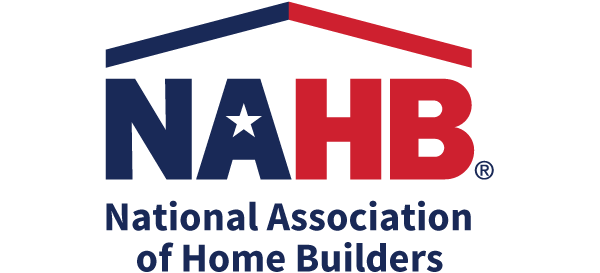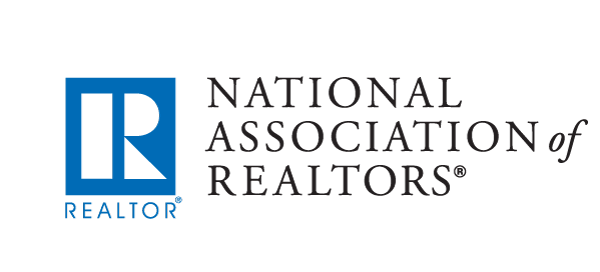Home Performance Counts
NAHB + NAR = High Performance Collaboration
The demand for green homes has grown rapidly in recent years, and many homebuyers today want healthier, more efficient homes. Are you skilled in speaking to and asking questions about your clients’ green home needs to provide the highest level of satisfaction possible and make the sale? Let’s do it together.
Providing High Performance Service
What Homebuyers Really Want
How to Explain High Performance Homes
What They Say vs. What They Want
NAHB and NAR offer extensive education programs, professional resources and research.
Read MoreDid you know the demand for green homes has grown rapidly in recent years?
Read MoreWhen speaking with homebuyers, it’s important to use words and phrases they can relate to.
Read MoreUnderstand what your homebuyer is really asking – even when they don't.
Read More
Your Competitive Edge
Providing High Performance Service
NAHB and NAR offer extensive education programs, professional resources and research to help you identify the latest high performance market trends, answer client questions about homebuyer preferences and give you a competitive edge.
Over the past decade, there has been a monumental shift in the average homebuyer’s and homeowner’s desire for sustainably built homes. Consumers actively seek out homes that will provide increased comfort, improved indoor air quality and lower utility bills.
Did You Know
-
33% of single-family-home builders currently build the majority of their homes with green features, and the number of homes certified to the National Green Building Standard has increased by more than 57% in just the past two years. (View source)
-
61% of REALTORS®, members of the National Association of REALTORS®, report that their clients are highly interested, interested or somewhat interested in sustainability. (View source)
-
83% of builders and remodelers believe that consumers will pay more for healthier homes. (View source)
To equip yourself with the knowledge necessary to speak effectively about high performance homes and the value they bring, consider taking the following steps:
-
STEP 1:
Expand your professional network by connecting and collaborating with local builder and real estate associations. Your extended network could provide the added value you need to connect more deeply with potential homebuyers in your local market.
-
STEP 2:
Stand out from the crowd. NAHB and NAR offer numerous education programs and opportunities to learn about the latest green building practices and features. You can even earn a professional credential like NAHB’s Certified Green Professional or NAR’s Green Designation to set yourself apart from the competition. See resources
-
STEP 3:
Stay educated. Green building practices and their benefits are constantly evolving. Access the latest market trends and sustainability research through NAR and NAHB to prepare yourself for homebuyer questions. See resources
-
STEP 4:
Use the curb appeal you can't see. Third-party certifications for the homes you build and sell are recognized and valued by homebuyers and can provide distinction within your local market. See resources
-
STEP 5:
Leverage your assets. If your market already has green MLS data fields, work together to maximize their impact on listings and value. Unsure about your market? Work with your local real estate association or multiple listing service to implement RESO standardized fields into your MLS. See resources
Selling green homes means building in the right systems and features, knowing how to promote them, answering potential homebuyer questions, and establishing the right relationships.

Top Motivators
What Homebuyers Really Want
Did you know the demand for green homes has grown rapidly in recent years? Today’s consumers are evaluating quality, comfort, costs and health when deciding to buy a home. Be prepared to answer your clients’ questions by learning the top motivators for purchasing green and high performance homes.
The demand for green homes has grown rapidly in recent years, and it shows no signs of slowing down.
Did You Know
-
81% of people who expect to buy a new home in the next two years say higher energy efficiency would cause them to choose one new home over another. (View source)
-
40% of potential homebuyers say they’re very likely to pay more for a high performance home. (View source)
-
75% of Millennials and 51% of baby boomers are willing to pay more for sustainable offerings. (View source)
Market research shows that the top four motivators for buying a green home are:
-
Quality
People want the best home they can buy or build. Current building codes, best practices for sustainable building and materials can lead to improved home performance. Higher-quality homes are more durable and require less maintenance.
-
Comfort
People want quieter homes with consistent temperatures that are free from drafts and odors. High performance homes can provide an improved sense of well-being.
-
Costs
People want lower, more predictable homeownership expenses and utility bills. High performance homes help keep energy and water costs in check.
-
Health
People want safe homes where their families can thrive. High performance homes are built to help improve air quality and reduce harmful toxins indoors.
Buyers are willing to pay more for green homes if you can help them understand the home’s features and systems. Home builders and real estate professionals can collaborate to show clients that high performance homes can provide a living space built with higher-quality materials, added comfort, lower utility costs and healthier indoor environments for their families.
Remember – you’re not alone. Builders have the technical knowledge and ability to create the high performance homes buyers are looking for. Real estate professionals know what homebuyers want and can communicate the benefits of these features in a digestible way. Effective collaboration and communication between builder and real estate professionals provides potential buyers the knowledge they need to decide if a high performance home is right for them.
Capture a share of this growing market. Connect with other local builders and real estate agents in your area to collaborate on the sale of your next home.
Clear Communication
How to Explain High Performance Homes
When speaking with potential homebuyers, it’s important to use words and phrases they can understand and relate to. Too often, builders and real estate professionals forget that industry lingo can be complicated, overwhelming and, in some instances, off-putting to consumers. Do you communicate clearly?
Did You Know
-
29% of builders think green homes are harder to market. (View source)
-
62% of NAR members aren’t really comfortable answering questions about home performance. (View source)
-
But 69% of NAR members say it’s valuable to market the energy efficient features of a home. (View source)
Buyers are seeking the benefits of high-performance homes and the good news is, they are willing to pay more for them. It is important to identify the many features, both visible and hidden, of a high-performance home. Learning how to communicate the qualities and benefits of a high-performance home to your client offers them a higher level of service and helps them more easily understand its value.
When talking with a potential homebuyer about home performance:
- Comfortable
- Water-saving Features
- Environmentally Friendly
- Low Maintenance
- High-quality Construction
- Energy Efficient
- Independently Inspected
- Eco-friendly Home
- Lower Utility Bills
- Ventilation
- Facilitates Healthy Lifestyle
- Healthy Living Environment
- Whole-House Approach
- Functional Living Spaces
- Environmentally Conscious
- Livable
- Low-flow Water Features
- Green Conscious
- Reduced Upkeep
- Advanced Construction Practices
- High Efficiency
- Third-party Inspected
- Green Home
- Reduced Energy/Water Use
- Pollution Control
- Facilitates Well-being
- Nontoxic Materials
- House as a System
- Inspired Design
- Low Impact
When talking with a potential homebuyer about home performance:

- Comfortable Livable
- Water-saving Features Low-flow Water Features
- Environmentally Friendly Green Conscious
- Low Maintenance Reduced Upkeep
- High-quality Construction Advanced Construction Practices
- Energy Efficient High Efficiency
- Independently Inspected Third-party Inspected
- Eco-friendly Home Green Home
- Lower Utility Bills Reduced Energy/Water Use
- Ventilation Pollution Control
- Facilitates Healthy Lifestyle Facilitates Well-being
- Healthy Living Environment Nontoxic Materials
- Whole-House Approach House as a System
- Functional Living Spaces Inspired Design
- Environmentally Conscious Low Impact
Home performance is a new concept to many homebuyers and sellers. Often, clients know they want a healthy, comfortable, lower-maintenance home, but don’t know how to articulate it. Be mindful not to overwhelm your client. When you discuss the high performance features of a home, be sure to highlight the benefits those features provide. And remember, the top influencers for purchasing decisions include a safe community, reputable neighborhood where homes hold resale value, energy-efficient features that lower utility bills, durable materials with low maintenance and a healthy indoor living environment.
Finally, be sure to mention any third-party certifications you or the home have. These could include ratings like the Home Energy Score or HERS, certifications like ENERGY STAR®, the National Green Building Standard designation, or LEED. Most consumers do not fully understand what third-party certifications represent, or the value they can bring. Be sure to explain what aspects of green building your home certification covers. Does it only certify its energy efficiency or indoor air quality, like ENERGY STAR or Indoor airPlus? Or is it holistic, including all aspects of green building – water, energy and resource efficiency, indoor air quality, homeowner education, and lot design and development, like NGBS Green Certified or LEED? Do your own research ahead of time so you can answer client questions about third-party certifications – it goes a long way in helping make the sale.

Help consumers understand that many high performance certifications are independently inspected. The independent nature of the inspection ensures that the materials and systems hidden behind the walls are installed correctly, are high quality and function as intended to increase efficiency. In some cases they also promote healthier indoor living environments. When it’s time to resell, third-party certifications are an easy way to confirm construction practices and materials, providing more complete information for home valuation.

Homebuyer Translation
What They Say vs. What They Want
Understand what your homebuyer is really asking – even when they don’t.
Things to Listen for from the Homebuyer...
Someone in my family has allergies and asthma.
Key selling point to highlight
Healthier indoor air quality
What features to point out
- Bathroom exhaust fan
- Kitchen range hood
- HEPA filter
- HVAC systems with sensors and automation
- Low VOC materials
Talking points and highlights
- Be sure to mention the potential benefits a third-party green or high performance certification has for resale value.
- Discuss how air sealing and ventilation can impact air quality indoors.
- Discuss the importance of changing air filters and the types of filters that can be used for improved air quality.
- Discuss best practices for operating the HVAC system to get the optimal performance.
I'm worried about temperatures changing from room to room.
Key selling point to highlight
Increased energy efficiency, comfortable indoor temperature
What features to point out
- A smart thermostat
- Weatherstripping around windows & doors
- High R-value insulation in floors, walls and ceilings
- A continuous building envelope
Talking points and highlights
- Overall home performance requires upgrades and systems to be working together for optimal comfort (sealing, heating, ventilation and air conditioning systems, etc.). Discuss the existing systems and the impact of potential upgrades with these features.
- Discuss the advantages of smart technology in the home and their potential to lower utility bills.
- Be sure to mention the potential benefits a third-party green or high-performance certification has for resale value.
We fight over the thermostat.
Key selling point to highlight
Consistent indoor temperature
What features to point out
- A smart thermostat
- High R-value insulation in floors, walls and ceilings
- Appropriately sized HVAC equipment
- A continuous building envelope
Talking points and highlights
- Be sure to talk about the age and size of heating and cooling systems and encourage clients or homeowners to share any information about previous energy testing or ratings.
- In new construction, be sure to find out if the new homeowner is planning to add more air-conditioned space and how the size and efficiency of the HVAC system can reflect those intentions and optimize performance.
- Look into the property’s thermostat(s) and how it might be upgraded to a programmable smart thermostat.
When I play on the floor with my kids, I notice it's always cold.
Key selling point to highlight
Increased energy efficiency
What features to point out
- Weatherstripping around windows and doors
- High R-value insulation in floors, walls and ceilings
- A continuous building envelope
Talking points and highlights
- Check for information about the home’s insulation and look for ways to reduce excess air getting into the home through poorly sealed windows or doors.
- Explain the importance of a continuous building envelope.
- Consider doing a thermal image of the property for sale to assess air leakage.
When I cook, the smell lingers.
Key selling point to highlight
Improved ventilation
What features to point out
- Kitchen range hood
- Smart appliances
- HVAC systems with sensors and automation
Talking points and highlights
- Point out the kitchen exhaust fan or recommend one be installed in older homes. Check on the filters for the HVAC system and how and where air is vented from the kitchen.
- Change all air filters regularly. Based on the type of filters, the requirements may vary. Other factors, such as pets, allergies or asthma, may require more frequent changing.
- Discuss the different filter options.
The bathroom walls are always wet after I take a shower and I worry about mold.
Key selling point to highlight
Improved ventilation
What features to point out
- Bathroom exhaust fan
- HVAC systems with sensors and automation
Talking points and highlights
- Make sure to check the bathroom exhaust fan and that it vents out properly through a wall or roof with as few turns as possible.
- Be sure to run the bathroom exhaust fan for a time after a shower.
I don't like that the heater seems to run all the time.
Key selling point to highlight
Increased energy efficiency, lower monthly bills
What features to point out
- A smart thermostat
- High R-value insulation in floors, walls and ceilings
- Appropriately sized HVAC equipment
- A continuous building envelope
Talking points and highlights
- Discuss the home’s building envelope and home performance with your client.
- Address how smart thermostats can help maintain consistent indoor temperatures and help HVAC systems run more efficiently.
- Discuss whether performance testing is necessary, like a blower door test. Discuss the benefits of energy ratings.
- Be sure to mention the potential benefits a third-party green or high-performance certification has for resale value.
My current home always feels humid.
Key selling point to highlight
Consistent indoor temperature
What features to point out
- HVAC systems with sensors and automation
- High R-value insulation in floors, walls and ceilings
- Appropriately sized HVAC equipment
- A continuous building envelope
- Bathroom exhaust fan
- Kitchen range hood
- Dryer vented to outside
Talking points and highlights
- Check out the HVAC specs of a potential home for efficiency and moisture management.
- Discuss how a continuous building envelope, air sealing, and increased insulation in the walls and attic can prevent air leakage and increase energy efficiency.
- Address moisture issues in the basement and check for proper sealing.
- Check that vents for the dryer, bathroom fans and kitchen hood exhaust all vent outside.
I feel outside air getting in when I'm near the windows.
Key selling point to highlight
Consistent indoor temperature, comfortable indoor space
What features to point out
- High R-value insulation in floors, walls and ceilings
- Weatherstripping around windows & doors
- Appropriately sized HVAC equipment
- A continuous building envelope
- Double- or triple-pane window with lower SHGC and u-factors
Talking points and highlights
- Discuss how a continuous building envelope, air sealing, and increased insulation in the walls and attic can prevent air leakage and increase energy efficiency.
- Windows and doors with lower u-factors insulate better and windows with lower solar heat gain coefficients (SHGC) transmit less solar heat. Windows must also be installed and sealed correctly around the edges to decrease air leakage and drafts.
- Be sure to mention the potential benefits a third-party green or high-performance certification has for resale value.
The paint on my siding is peeling.
Key selling point to highlight
Improved durability and reduced humidity
What features to point out
- Moisture management
- Dehumidification system
- Bathroom exhaust fan
- A continuous building envelope
Talking points and highlights
- Improved home ventilation reduces risk of paint peeling because moisture is not trying to escape through walls. Discuss how an exterior wall system is designed to keep moisture out of walls in their specific geographic region.
- Discuss the benefits of an automated HVAC system with moisture sensors and how venting bathroom exhaust fans and range hoods directly to the outside of a house can reduce humidity and potentially improve indoor air quality.
My utility bills are too high.
Key selling point to highlight
Increased energy efficiency, lower monthly bills
What features to point out
- A smart thermostat
- High R-value insulation in floors, walls and ceilings
- Appropriately sized HVAC equipment
- A continuous building envelope
- ENERGY STAR appliances
- WaterSense labeled fixtures
- Irrigation systems with sensors
Talking points and highlights
- For energy efficiency, discuss with your client the benefits of energy efficient fixtures, smart thermostats, ENERGY STAR Whole Home certification, green home certification, Energy Rating Index Score and a HERS Score.
- For water efficiency, discuss with your client the benefits of WaterSense Labeled fixtures, no leaks, shorter pipe runs to fixtures, a centrally located hot water heater, continuous hot water loop, WaterSense Whole Home certification and a green home certification.
- Be sure to mention the potential benefits a third-party green or high-performance certification has for resale value.
There are lots of homes with solar panels in my area.
Key selling point to highlight
Renewable energy systems, lower monthly bills
What features to point out
- High R-value insulation in floors, walls and ceilings
- Appropriately sized HVAC equipment
- A continuous building envelope
- Solar-ready construction
Talking points and highlights
- Solar panels have the potential to save energy and ultimately lower utility bills. To maximize energy efficiency, there are many construction techniques and building products to use in a home in addition to solar panels.
- If the homeowner would like to install solar panels in the future, a builder can install conduit and add extra bracing to the roof.
- Homeowners should understand the different financing programs for solar in their area to decide whether it is a good choice for them.
- In addition to solar panels, a battery backup for energy storage can also be installed to provide continuous energy even when the sun is not out.
Resources
More Tools for the Home Performance Trade
Home Performance Counts is an educational initiative developed jointly by the National Association of REALTORS® (NAR) and the National Association of Home Builders (NAHB) to help their members work together and succeed in the rapidly growing marketplace for high performance homes.
NAHB + NAR. Meet the demand for green homes together. Get started today with these resources.
- NAHB’s Homebuyer Preference Survey
- Find a REALTOR® near you or search for an NAR GREEN Designee
- Find a builder in your area that is a Certified Green Professional
- NAR’s Sustainability Report
- NAHB’s Sustainability Resource Page
- NAHB’s Green Courses
- NAR’s Green Courses
- How using green MLS fields can add value
- Green Certifications
- NAR Sustainability Program
- Download the Home Performance Counts one sheet
- Download the Home Performance Counts infographic

